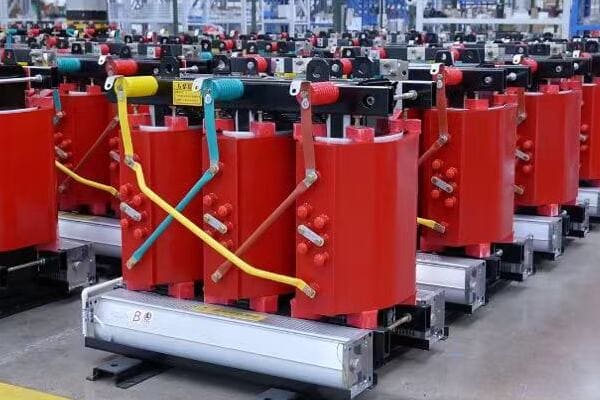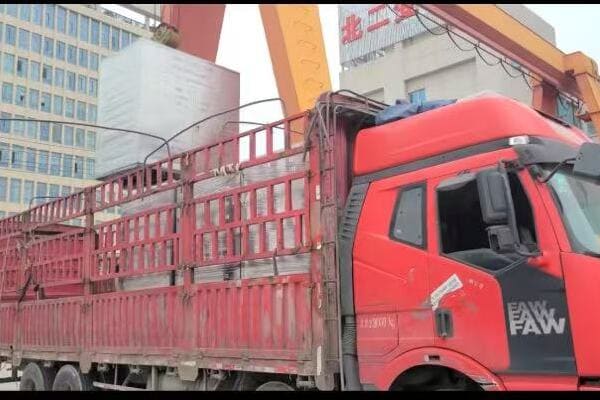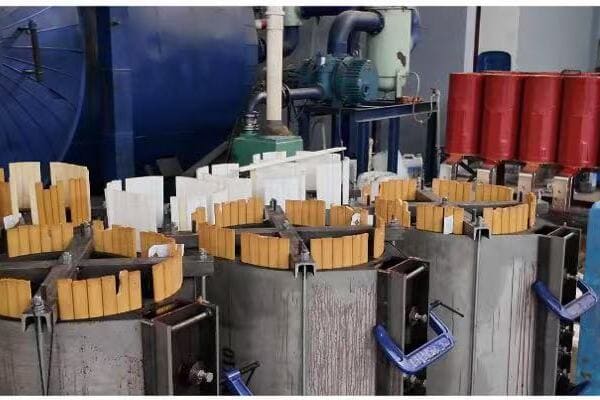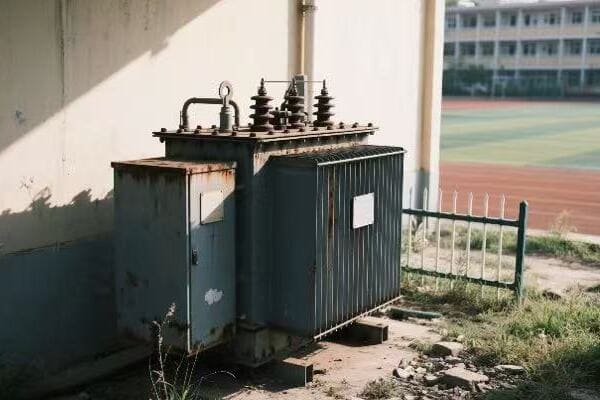What is Transformer Electricity and Why is it Crucial for Power Distribution?
Have you ever wondered how electricity travels from power plants to your home? It’s not as simple as you might think. The journey involves a crucial component: transformer electricity.
Transformer electricity is the process of changing voltage levels in electrical power systems. It’s essential for efficient power distribution because it allows electricity to be transmitted over long distances with minimal losses and then safely used in our homes and businesses.

As someone who has worked in the power industry for years, I’ve seen firsthand how transformers shape our modern electrical grid. Let’s dive deeper into this fascinating topic and explore why it’s so important for our daily lives.
Understanding Transformer Electricity: From Power Plants to Your Home?
Imagine trying to fill a small glass with water from a fire hose. That’s similar to what would happen if we tried to use electricity directly from power plants in our homes.
Transformer electricity is the process that makes it possible to safely bring power from large generating stations to our homes. It involves stepping up the voltage for long-distance transmission and then stepping it down for local distribution and use.

Let me take you on a journey of how electricity travels from power plants to your home, and why transformers are crucial at every step.
The Power Plant: Where It All Begins
At the power plant, electricity is generated at a relatively low voltage, typically around 20,000 volts. However, this voltage is too low for efficient long-distance transmission.
Step-Up Transformers: Preparing for the Journey
Before the electricity leaves the power plant, it passes through step-up transformers. These increase the voltage to very high levels, often between 155,000 to 765,000 volts. This high voltage is crucial for minimizing power losses during transmission.
Transmission Lines: The Long-Distance Journey
The high-voltage electricity then travels through transmission lines, which can span hundreds of miles. The high voltage allows the electricity to travel long distances with minimal losses.
Substation Step-Down Transformers: Preparing for Local Distribution
When the electricity reaches local areas, it passes through substation transformers. These step down the voltage to lower levels, typically around 4,000 to 69,000 volts, suitable for local distribution.
Distribution Transformers: The Final Step
Finally, just before reaching our homes and businesses, the electricity passes through distribution transformers. These further reduce the voltage to levels we use in our daily lives – 120/240 volts in most U.S. homes.
| Stage | Voltage Level | Purpose |
|---|---|---|
| Generation | ~20,000 V | Initial electricity production |
| Step-Up | 155,000 – 765,000 V | Prepare for long-distance transmission |
| Transmission | 155,000 – 765,000 V | Efficient long-distance power transfer |
| Substation Step-Down | 4,000 – 69,000 V | Prepare for local distribution |
| Distribution | 120/240 V | Safe use in homes and businesses |
This journey, made possible by transformer electricity, ensures that we can safely and efficiently use the power generated at distant plants in our everyday lives.
The Science Behind Voltage Transformation: How Transformers Work?
Have you ever been curious about the magic behind transformers? How can they change voltage levels so efficiently? The answer lies in a fascinating interplay of electromagnetic principles.
Transformers work based on the principle of electromagnetic induction. They use two coils of wire wrapped around an iron core. When alternating current flows through one coil (the primary), it creates a changing magnetic field that induces a voltage in the other coil (the secondary).

Let’s break down the science behind transformers and explore how they perform their voltage transformation magic.
The Basic Components of a Transformer
A transformer consists of three main parts:
- Primary Coil: This is where the input voltage is applied.
- Secondary Coil: This is where the transformed voltage is output.
- Iron Core: This helps to concentrate and direct the magnetic field between the coils.
The Principle of Electromagnetic Induction
The key to a transformer’s operation is electromagnetic induction, discovered by Michael Faraday in 1831. Here’s how it works in a transformer:
- When an alternating current flows through the primary coil, it creates a changing magnetic field.
- This changing magnetic field is concentrated and directed by the iron core.
- The changing magnetic field then induces an alternating voltage in the secondary coil.
The Transformer Equation
The relationship between the number of turns in each coil and the voltages is given by the transformer equation:
(Vs / Vp) = (Ns / Np)
Where:
- Vs = Secondary Voltage
- Vp = Primary Voltage
- Ns = Number of turns in the Secondary Coil
- Np = Number of turns in the Primary Coil
This means that if we want to step up the voltage, we need more turns in the secondary coil than in the primary. Conversely, to step down the voltage, we need fewer turns in the secondary coil.
| Transformer Type | Primary Turns | Secondary Turns | Voltage Change |
|---|---|---|---|
| Step-Up | Fewer | More | Increases |
| Step-Down | More | Fewer | Decreases |
Efficiency and Power Conservation
One of the remarkable aspects of transformers is their high efficiency. In an ideal transformer, the power out equals the power in. This means:
Vp Ip = Vs Is
Where Ip and Is are the primary and secondary currents respectively.
In practice, transformers are not 100% efficient due to factors like core losses and copper losses, but modern large transformers can achieve efficiencies over 99%.
Understanding these principles has been crucial in my work designing and optimizing power systems. It’s this science that allows us to efficiently transmit power over long distances and use it safely in our homes and businesses.
Transformer’s Role in Efficient Power Distribution: Overcoming Distance Challenges?
Have you ever wondered why we need such high voltages for power transmission? The answer lies in the challenges of distributing power over long distances, and transformers play a crucial role in overcoming these challenges.
Transformers enable efficient power distribution by allowing electricity to be transmitted at high voltages over long distances, which significantly reduces power losses. They then step down the voltage for safe local distribution, balancing the needs of long-distance transmission with local power usage.

Let me share some insights from my experience in the power industry about how transformers help us overcome the challenges of distance in power distribution.
The Challenge of Distance in Power Distribution
Distributing power over long distances presents several challenges:
- Power Losses: As electricity flows through transmission lines, some energy is lost as heat due to the resistance of the wires.
- Voltage Drop: Over long distances, the voltage at the receiving end can be significantly lower than at the sending end.
- Cost: Thicker wires can reduce losses but are much more expensive.
How Transformers Address These Challenges
Transformers help overcome these challenges in several ways:
-
Enabling High-Voltage Transmission: By stepping up the voltage at the power plant, transformers allow electricity to be transmitted at very high voltages.
-
Reducing Current: Since Power = Voltage * Current, increasing the voltage means we can transmit the same amount of power with less current.
-
Minimizing Power Losses: Power loss in transmission lines is proportional to the square of the current (P = I^2 * R). By reducing the current, we significantly reduce power losses.
The Mathematics of Power Loss Reduction
Let’s look at a simple example to illustrate how transformers help reduce power losses:
| Scenario | Voltage | Current | Resistance | Power Loss |
|---|---|---|---|---|
| Without Transformer | 10,000 V | 100 A | 10 Ω | 100,000 W |
| With Transformer | 100,000 V | 10 A | 10 Ω | 1,000 W |
In this example, by increasing the voltage by a factor of 10 (which a transformer can do), we reduce the current by the same factor. This results in power losses being reduced by a factor of 100!
Balancing Transmission and Distribution Needs
Transformers also allow us to balance the needs of long-distance transmission with local power usage:
- Step-Up Transformers at Power Plants: Increase voltage for efficient long-distance transmission.
- Step-Down Transformers at Substations: Reduce voltage for local distribution.
- Distribution Transformers: Further reduce voltage for safe use in homes and businesses.
This system of transformers creates a flexible and efficient power distribution network that can adapt to the needs of different areas and users.
In my work designing power systems, I’ve seen how crucial this balance is. Without transformers, our modern power grid simply wouldn’t be possible. They’re the unsung heroes that make our electrified world work.
Everyday Applications of Transformer Technology: Beyond the Power Grid?
When most people think of transformers, they picture those large, humming boxes in electrical substations. But did you know that transformer technology is all around us, even inside our homes?
Transformer technology is used in a wide range of everyday applications beyond the power grid. From the chargers for our electronic devices to the ballasts in fluorescent lights, transformers play a crucial role in many of the technologies we use daily.

As someone who’s worked with electrical systems for years, I’m always fascinated by how ubiquitous transformer technology is. Let’s explore some of these everyday applications.
Electronic Device Chargers
One of the most common applications of transformer technology that we interact with daily is in our electronic device chargers.
-
Smartphone Chargers: These small adapters contain miniature transformers that step down the 120V AC from your wall outlet to the low DC voltage your phone needs.
-
Laptop Power Supplies: The "brick" in your laptop charger contains a transformer to convert high voltage AC to low voltage DC.
Lighting Systems
Transformers play a crucial role in many lighting systems:
-
Low-Voltage Lighting: Outdoor lighting systems often use transformers to step down voltage for safety and efficiency.
-
Fluorescent Lights: The ballasts in fluorescent lights contain small transformers that regulate the current flow.
Home Appliances
Many home appliances use transformers:
-
Microwave Ovens: These contain a large transformer to step up the voltage for the magnetron that generates microwaves.
-
Doorbells: Transformers reduce the 120V house current to the low voltage needed for doorbells.
Audio Equipment
Transformers are crucial in audio systems:
-
Guitar Amplifiers: Output transformers are key components in tube amplifiers, contributing to their distinctive sound.
-
High-End Audio Systems: Some audiophiles prefer systems with transformer-coupled outputs for their sound quality.
Industrial Applications
Beyond consumer applications, transformers are used extensively in industry:
-
Welding Equipment: Arc welders use transformers to produce the high currents needed for welding.
-
Electric Furnaces: Transformers supply the high currents needed for electric arc furnaces in steel production.
| Application | Input Voltage | Output Voltage | Purpose |
|---|---|---|---|
| Smartphone Charger | 120V AC | 5V DC | Safe charging |
| Laptop Power Supply | 120V AC | 19V DC | Power laptop |
| Low-Voltage Lighting | 120V AC | 12V AC | Safe outdoor lighting |
| Doorbell | 120V AC | 16V AC | Safe operation |
| Microwave Oven | 120V AC | ~2000V AC | Power magnetron |
| Welding Equipment | 240V AC | 20-40V AC | High current for welding |
These everyday applications demonstrate the versatility and importance of transformer technology. From ensuring the safety of our electronic devices to enabling industrial processes, transformers are a fundamental part of our technological world.
In my work, I’ve seen how the principles of transformer design that we use in large power systems are applied on a smaller scale in these everyday devices. It’s a testament to the elegance and utility of this technology.
The Future of Power Distribution: Transformers and Renewable Energy Integration?
As we move towards a more sustainable future, the role of transformers in power distribution is evolving. How will transformer technology adapt to the challenges and opportunities presented by renewable energy sources?
The integration of renewable energy sources into the power grid presents new challenges for transformer technology. Smart transformers, capable of handling bidirectional power flow and voltage fluctuations, will be crucial for managing the intermittent nature of renewables and enabling a more flexible, resilient grid.

As someone who’s been in the power industry for years, I’ve witnessed the beginning of this transformation. Let me share some insights into how transformers are adapting to the renewable energy revolution.
The Challenge of Renewable Energy Integration
Renewable energy sources like solar and wind present several challenges for traditional power distribution systems:
-
Intermittency: Unlike traditional power plants, renewable sources don’t produce a constant, predictable output.
-
Distributed Generation: Renewable sources are often spread out, rather than centralized like traditional power plants.
-
Bidirectional Power Flow: With home solar panels, power can now flow both to and from homes.
Smart Transformers: The Future of Power Distribution
To address these challenges, the future of transformers lies in "smart" or "solid-state" transformers. These advanced devices offer several advantages:
-
Voltage Regulation: They can quickly adjust to voltage fluctuations caused by intermittent renewable sources.
-
Bidirectional Power Flow: They can handle power flowing in both directions, essential for integrating distributed renewable sources.
-
Power Quality Management: They can actively manage power quality issues like harmonics and reactive power.
-
Data Collection and Communication: They can provide real-time data about power flow and grid conditions.
Transformer Efficiency in the Renewable Era
As we integrate more renewables, transformer efficiency becomes even more crucial:
-
Low-Loss Materials: Advanced magnetic materials like amorphous metals can significantly reduce transformer losses.
-
Optimized Design: Computer modeling allows for more efficient transformer designs.
-
Cooling Innovations: New cooling methods can improve efficiency and extend transformer life.
Microgrids and Transformers
Microgrids – small, semi-independent power systems – are becoming increasingly important for grid resilience and renewable integration. Transformers play a key role in microgrid systems:
-
Isolation: Transformers can electrically isolate microgrids from the main grid when needed.
-
Voltage Matching: They help match the microgrid’s voltage to the main grid for seamless integration.
The Role of High-Voltage DC (HVDC) Transmission
As renewable energy sources are often located far from population centers, HVDC transmission is becoming more important. This technology relies on specialized transformers:
-
AC/DC Conversion: Special transformers are used in the converter stations that change AC to DC and back.
-
Efficiency: HVDC can be more efficient than AC for very long-distance transmission, especially for connecting offshore wind farms.
| Technology | Key Features | Benefits for Renewable Integration |
|---|---|---|
| Smart Transformers | Bidirectional power flow, voltage regulation | Manages intermittent sources, enables distributed generation |
| Low-Loss Materials | Reduced energy losses | Improves overall system efficiency |
| Microgrids | Semi-independent operation | Increases grid resilience, facilitates local renewable integration |
| HVDC Transmission | Efficient long-distance transmission | Connects remote renewable sources to population centers |
In my work, I’ve seen how these advancements in transformer technology are enabling the transition to a more sustainable energy future. It’s an exciting time in the power industry, and transformers are at the heart of this revolution.
Conclusion
Transformer electricity is the unsung hero of our modern power systems. From enabling efficient long-distance transmission to safely powering our homes, transformers are crucial at every step of power distribution.
Free CHBEB Transformer Catalog Download
Get the full range of CHBEB transformers in one catalog.
Includes oil-immersed, dry-type, pad-mounted, and custom solutions.
Quick Message
Request A free quote
We'd like to work with you
- +86 15558785111
- [email protected]
- +86 15558785111
What We Do
CHINA BEI ER BIAN (CHBEB) GROUP, with 218 million in registered capital, originated from Beijing Beierbian Transformer Group. Headquartered in Beijing for R&D, it operates major production bases in Nanjing and Yueqing, producing high-quality products.
Latest Product
address
BeiJing
No 3,RongJing East Road,BeiJing Economic Technological Development Area,BeiJing,China
JiangSu
No 7️Xiangfeng Road,Jiangning,NanJing,JiangSu,China
WenZhou
No.211, Wei 16 Road, Industrial Zone, Yueqing, Wenzhou, Zhejiang, China.
XiangYang Industrial Zone ,YueQing,WenZhou,ZheJiang,China
contact us
- [email protected]
- +86 13057780111
- +86 13057780111
- +86 15558785111
Copyright © Bei Er Bian Group


